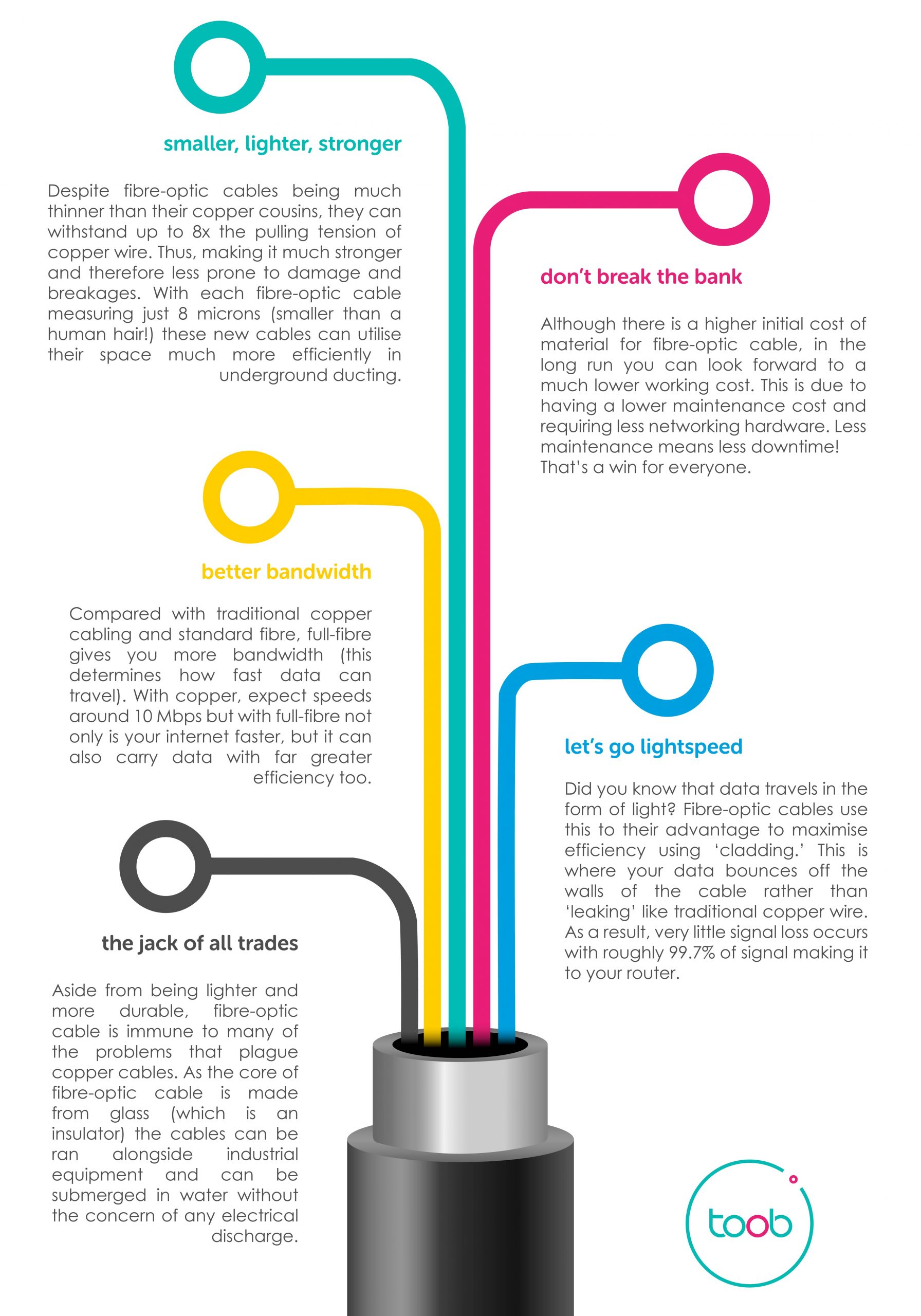21st June 2022
Following a recent study on the average bandwidth usage per household, it was found that 10GB of data was being used every day – equivalent to three HD movies being streamed in every house in Britain, at the same time! With the exponential rise in broadband usage now taking over our homes through surfing, streaming, speakers and even some lightbulbs needing a connection – the modern era of broadband needs technology that is up to the task.
Let’s face it, new technology is exciting, but did you know that the majority of the UK’s network is still being run through copper cables that are over 100 years old? New tech has come a long way since then, and you probably wouldn’t drive a car from 1922 so why trust these old systems to carry your precious broadband in 2022?
So, what exactly is fibre broadband technology, and how does this translate into full-fibre?

fibre to full-fibre
One of the biggest benefits of full-fibre broadband is that it brings fibre-optic cables directly into your home. Why is this important? Running fibre-optic cables to your home allows for a stronger connection, fully utilising the benefits of fibre technology. With standard fibre, the cables stop at the cabinet in your street, which is then slowed down by copper to you home – so why not benefit from 100% fibre technology straight to your door, resulting in a stronger and faster connection for your home?
So, there you have it! Congratulations on becoming a fibre expert. Now you can wow your friends with your extensive knowledge of the fibre-optic cabling… Just us?
Either way, as this new technology continues to grow, it’s good to know the infrastructure behind your broadband and just how exciting the future of full-fibre really is.
